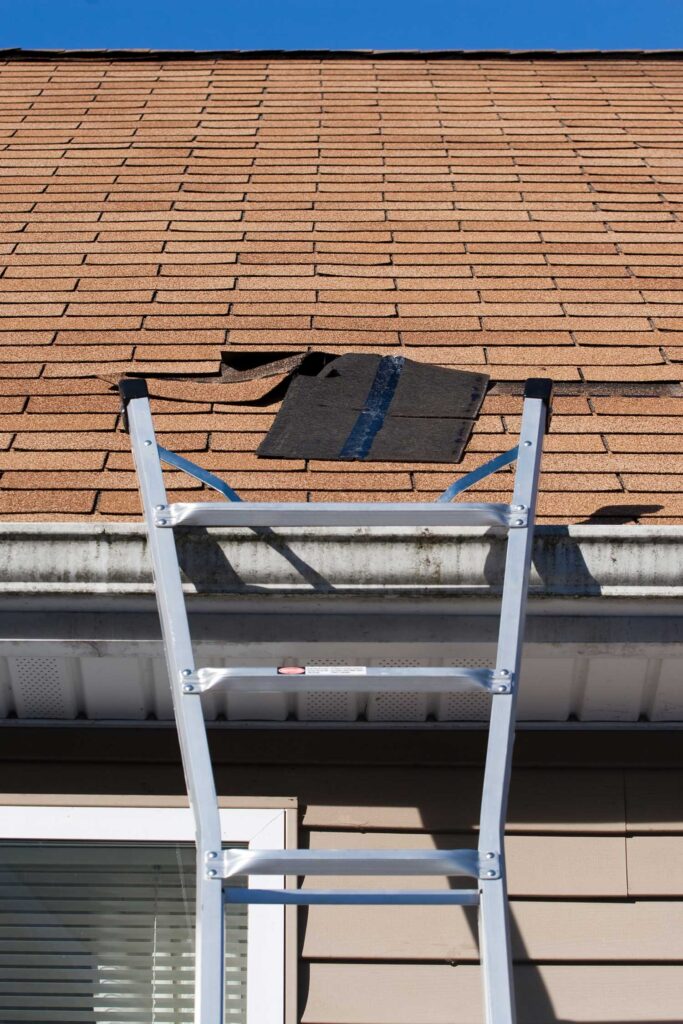
Cape Coral, FL, is known for its stunning weather and beautiful scenery, but it’s also a hotspot for tropical storms and hurricanes. With frequent storm activity, your roof endures significant wear and tear. Over time, even minor damage can turn into serious issues if not addressed. Identifying old storm damage on your roof is crucial for safeguarding your home and avoiding costly repairs. This guide will walk you through spotting signs of previous storm damage on roofs and how to assess and manage them effectively.
Why Identifying Old Storm Damage Is Important
Your roof acts as your home’s primary defense. Old storm damage can compromise its integrity, making it more susceptible to future storms. Ignoring these signs can lead to severe issues, such as leaks and structural damage, increasing repair costs. In Cape Coral, where storms are a regular occurrence, maintaining your roof’s condition is essential.
Signs of Previous Storm Damage on Roofs
Understanding what to look out for is the first step in identifying old storm damage. Here are key indicators to keep in mind:
1. Missing or Damaged Shingles
A clear sign of storm damage is missing or damaged shingles. High winds and hail can rip shingles off or cause them to crack. If you notice any bare patches on your roof or shingles that appear worn out or cracked, it’s a clear indication of storm impact.
2. Granule Loss on Shingles
Asphalt shingles come coated with granules that protect them from UV rays and weather. Storms can wear these granules away. Check your roof for granule loss—both on the shingles and in your gutters. Excessive granule loss means your shingles might not be as effective in shielding your roof from the elements.
3. Water Stains on Ceilings or Walls
Water stains on your ceilings or walls often indicate that water has seeped through your roof. Look for brown or yellow spots. These stains suggest that past storm damage might have allowed moisture to infiltrate your home.
4. Dented or Damaged Gutters and Downspouts
Hail and wind can cause significant damage to gutters and downspouts. Check for dents, cracks, or missing sections. Damaged gutters can disrupt water drainage and put additional stress on your roof.
5. Loose or Missing Flashing
Flashing directs water away from roof edges, chimneys, vents, and skylights. Storms can knock flashing out of place or damage it. Inspect your flashing for gaps, rust, or looseness. Damaged flashing can lead to leaks and other serious issues.
6. Visible Impact Marks or Dents
Hailstorms can leave noticeable impact marks on your roof, especially on metal roofs or shingles. Look for areas that appear dented or damaged. Even subtle dents can indicate old storm damage that needs attention.
7. Mold or Mildew Growth
Mold and mildew growth on your roof or in your attic are signs of moisture problems. Storm damage that allows water to infiltrate your roof can create conditions for mold to thrive. If you see mold or mildew, it’s crucial to address the root cause, which may be old storm damage.
8. Sagging Roof Sections
A sagging roof is a serious concern and usually results from prolonged water damage caused by storms. If you notice any sections of your roof sagging or uneven, it indicates that the underlying structure might be compromised. This type of damage requires prompt attention.
How to Properly Assess Old Storm Damage on Your Roof
Identifying damage is just the beginning. Assessing the extent of the damage is equally important. Here’s how to carry out a thorough assessment:
1. Perform a Visual Inspection
Start by carrying out a visual inspection from the ground. Look for missing shingles, dents, or sagging areas. Use binoculars for a closer look without needing to climb up. Focus on vulnerable spots, such as roof edges, chimneys, and vents.
2. Check the Attic
Your attic can provide valuable insights into your roof’s condition. Look for signs of water infiltration, such as damp insulation or visible mold. Any light coming through the roof also suggests potential damage.
3. Inspect Gutters and Downspouts
Examine your gutters and downspouts closely. Look for granules in the gutters, which indicate shingle wear. Ensure that your gutters are securely fastened and free of dents or cracks. Proper drainage is essential to prevent additional damage to your roof.
4. Hire a Professional Roofing Contractor
While you can perform a basic inspection yourself, hiring a professional is crucial for a thorough assessment. Experienced roofers, like MHI Roofing, can spot subtle signs of damage and provide a detailed report. They’ll also help you come up with a plan to address the issues.
5. Document the Damage
If you find old storm damage, document it carefully. Take clear photographs of the affected areas, including shingles, gutters, and flashing. This documentation will be useful for filing an insurance claim or when planning repairs.
What to Do If You Find Old Storm Damage
Identifying damage is just the first step. Here’s what to do next:
1. Prioritize Repairs
Not all storm damage requires immediate attention, but prioritizing repairs is essential. Address issues such as water leaks, sagging roof sections, and missing shingles as soon as possible to prevent further problems.
2. Work with Your Insurance Company
If your home insurance covers storm damage, get in touch with your provider to discuss your coverage. Provide them with the documentation of the damage and work through the claims process if needed. A roofing contractor can assist you in navigating this process.
3. Schedule Professional Repairs
For effective repair, work with a reputable roofing contractor. At MHI Roofing, we specialize in storm damage repair and restoration in Cape Coral. Our team will assess the damage and provide a comprehensive plan to restore your roof.
Protect Your Roof and Your Home in Cape Coral
Your roof plays a critical role in protecting your home. Identifying and addressing old storm damage is essential to maintaining its integrity and avoiding costly repairs. If you suspect that your roof may have sustained damage from previous storms, don’t wait. Contact MHI Roofing today for a free, no-obligation inspection. Our experienced team is here to help you protect what matters most—your home.
